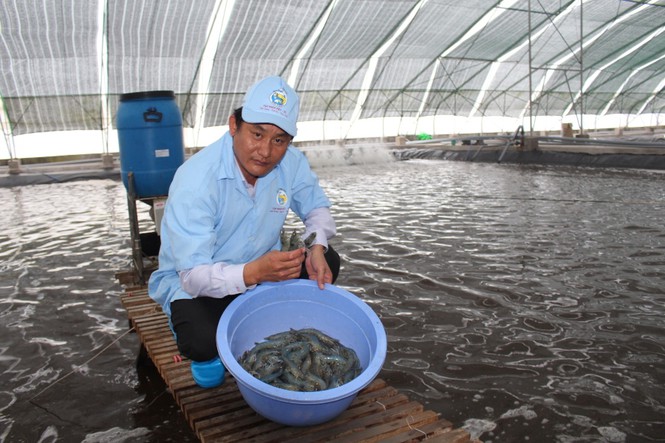SHRIMP EXPORTS TO CHINA INCREASED THE MOST IN THE PAST 5 YEARS
04 Sat, 2020
On April 11, Vietnam Association of Seafood Exporters and Producers said that in the five-year period (2015-2019), Vietnam's shrimp industry has achieved positive results in production and export. Shrimp exports in the past 5 years achieved an average annual growth of 4%, but the annual growth was not stable.
The shrimp farming area increased by an average of 1.4% / year, the output increased by an average of 5.7% / year, mainly due to the improved whiteleg shrimp farming productivity. The production of vannamei increased continuously and increased sharply by nearly 41% after 5 years, with an average increase of 9% per year. Meanwhile, black tiger shrimp production increased by an average of 1.2% and only increased by 3.1% after 5 years, productivity did not have a significant growth compared to vannamei.
During this period, the largest markets for Vietnam's shrimp exports (EU, US, Japan, China, and South Korea) accounted for 81-85% of the total value. In particular, exports to China broke the strongest with an average annual growth of 16% and after 5 years increased over 55%. Next is South Korea and EU. Since 2017, the US and EU have exchanged positions because shrimp exports to the US have declined continuously and sharply decreased than the EU market.

Shrimp farming for export in Bac Lieu. Photo: T.C
In total shrimp exports of Vietnam, frozen shrimp products still account for a large proportion. While processed shrimp only account for a significant proportion in some major markets, the highest is the US market, followed by the EU, Japan and South Korea, while ASEAN and China are low.
In the main markets, Vietnam's import tax on shrimp products has advantages over other exporting countries like Indonesia, India, Thailand or China, especially in markets with FTA agreements with Vietnam. This will continue to be an advantage for Vietnam's shrimp exports in 2020 and the years to come.
However, the COVID-19 outbreak has been affecting shrimp production and exports to markets, thus limiting the growth of the shrimp industry this year, but the impact of each market will be different.
Source: https://www.tienphong.vn/
Publication date: April 11th, 2020.
Related Post
The true fishmeal carbon footprint
The established Life Cycle Analysis (LCA) methodology to assess the fishmeal carbon footprint only accounts for the vessel fuel and post-harvest processing energy while ignoring the carbon sequestration potential of fish.
View more
Freezing Tropical Fruits: Convenient and Effective Solution with Octofrost Machines
Tropical fruits are always a great choice for providing nutrition and fresh flavor to daily meals.
View more


